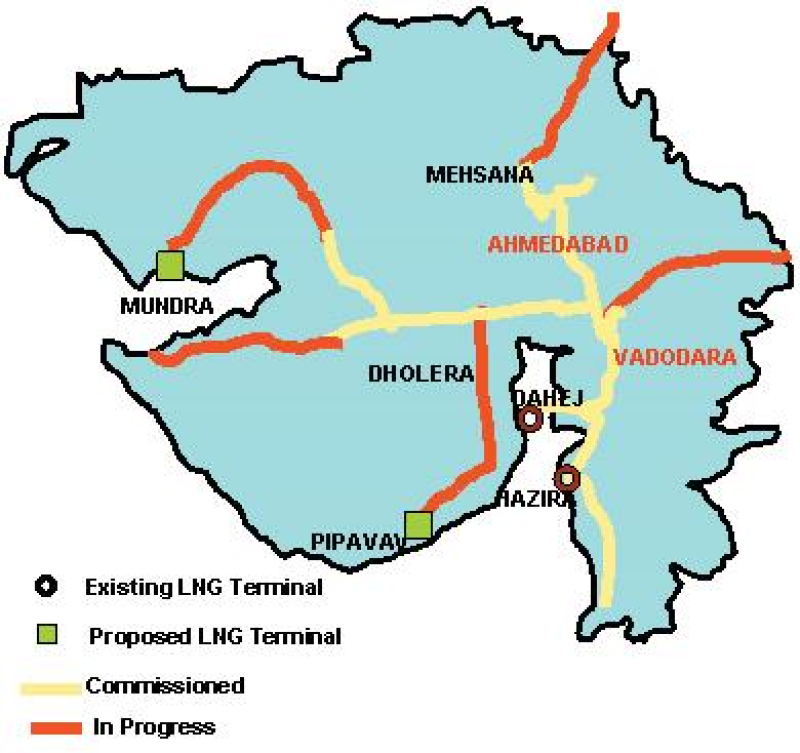Petroleum Powerhouses in India (2025)
As of 2025, Gujarat remains the leading state in India’s petroleum production. The state’s prominence is attributed to its significant oil fields, particularly in the Cambay Basin, and the presence of major refineries such as the Reliance Refinery in Jamnagar, which is among the largest globally. Additionally, Gujarat’s strategic location along the Arabian Sea facilitates efficient import and export of petroleum products.
Why Gujarat is the Leading State in Petroleum Production:
-
Historical Significance and Early Exploration: Gujarat has been a significant player in India’s petroleum industry for decades. The first major oil discovery in India was made in Gujarat’s Ankleshwar and Cambay Basin in the 1950s. The discovery of oil in these areas marked the beginning of the state’s prominence in petroleum production.
-
Strategic Location and Geology: Gujarat is geographically located near the Arabian Sea, giving it a strategic advantage for the import and export of petroleum products. The state’s geological formations, particularly the Cambay Basin, are rich in oil and gas reserves, making it ideal for exploration and production activities.
-
Oil Refineries: Gujarat hosts several large-scale refineries, such as:
- Reliance Refinery (Jamnagar): The Reliance refinery in Jamnagar is one of the largest in the world, with a processing capacity of 1.24 million barrels per day (bpd). This refinery makes Gujarat a major hub for refining and exporting petroleum products.
- Essar Oil Refinery: The Essar refinery in Vadinar is another significant refinery located in Gujarat.
The presence of these large refineries not only boosts Gujarat’s role in petroleum but also attracts investment in the oil sector, generating employment and driving economic growth.
-
Government Policies and Infrastructure: Gujarat has a well-developed infrastructure for oil exploration, production, and refining, including pipelines, transportation, and ports like the Kandla Port. The state government has also been proactive in attracting investments in the oil and gas sector, offering favorable policies, tax benefits, and incentives.
-
Private Sector Participation: Gujarat has attracted significant private sector investment in the petroleum industry, particularly by companies like Reliance Industries, Essar, and others. These companies have invested heavily in refining, exploration, and downstream activities in the state.
-
Petrochemical Industry: The presence of a vibrant petrochemical industry in Gujarat complements the state’s petroleum production. The products from refineries are used in various industries, including chemicals, plastics, and fertilizers, making Gujarat a hub for petrochemical production in India.
Following Gujarat, other notable contributors to India’s petroleum production include:
-
Assam: Historically significant, Assam continues to produce substantial amounts of crude oil, particularly from regions like Moran and Digboi.
-
Mumbai Offshore (Maharashtra): The Mumbai High field, located offshore, has been a major source of oil production. Efforts are ongoing to enhance its output, with collaborations such as the one between Oil and Natural Gas Corporation (ONGC) and BP aimed at boosting production by up to 60%.
-
Rajasthan: The Barmer Basin in Rajasthan has seen increased oil production, especially after significant discoveries by companies like Cairn India (now Vedanta Resources).
-
Tamil Nadu: Regions like Nagapattinam and the Cauvery Basin contribute notably to the state’s oil production, supported by facilities like the Chennai Petroleum Corporation Ltd (CPCL) refinery.
-
West Bengal (Kolkata Offshore): Offshore areas in the Bay of Bengal contribute to the state’s oil and gas reserves, adding to India’s overall production capacity.
These states, along with Gujarat, play pivotal roles in ensuring India’s energy security by contributing to the nation’s petroleum production.




